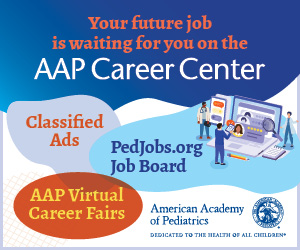Introducing: Method/ology
Pediatric hospital medicine (PHM), now in its adolescence, is a heterogenous field. Practitioners in a variety of practice settings serve in numerous clinical roles and care for diverse patient populations. Additionally, the last decade has seen a rapid increase in the number of professionals within PHM. This heterogeneity and workforce expansion are mirrored in the growing volume and breadth of scholarly work that hospitalists are leading and publishing. The scope of scholarly interests spans the translational spectrum, from bench to bedside, from research findings to widespread practice, and from medical education innovation to disseminated curricula (Fig 1). While PHM remains a very clinically focused subspecialty—and appropriately so—our jobs demand that we review and interpret the literature thoughtfully and deliberately. Even with a growing number of hospitalists receiving dedicated research training, the variety of approaches used within the relevant literature indicates that many of us are trying to interpret and effectively use evidence with limited familiarity on which to base a judgement of the quality of the literature. With that in mind, Hospital Pediatrics is launching a new article type dedicated to illuminating how research is done: Method/ology.
What is a method? What is an ology? As the title implies, this article type aims to explore some of the methods, skills, and knowledge relevant to hospitalists who are conducting research or interpreting the literature and to bring some light to the different methodologies relevant to the full span of the translational spectrum. The underlying goal is to provide a resource that practicing hospitalists, with or without formal research experience, can confidently read, interpret, and use to judge the quality of literature. While our inaugural article by Wallace et al focuses on a very fundamental concept, the hierarchy of evidence,1 Method/ology will tackle a wide range of concepts from P values to thematic saturation and everything in between and beyond. This new series will occupy a dedicated section of the journal to feature concise and useful how-tos on a variety of research approaches and build upon work the journal has published in its first decade, featuring wisdom from experts on topics including survey design,2 basic statistics,3,4 and medical education scholarship.5 Each of these papers will now be featured in the recently renamed Method/ology section of the journal website, which we hope can be a valued resource for trainees and attending physicians alike.
PHM will face many challenges in the coming years. First, it will be important for our field to pursue larger, multicenter studies and trials to provide high-quality data to guide our management of hospitalized children. These types of trials often require not only funding and a well-developed research infrastructure, but also a great deal of creativity to support data collection in multiple care settings. There are certainly positive developments in this realm, with the success of collaboratives such as the Pediatric Research in Inpatient Settings (PRIS) and Value in Inpatient Pediatrics (VIP) networks and $5.3 billion of National Institutes of Health funding going toward pediatric research in 2020.5 However, this represents just over 12% of the National Institutes of Health's total budget, and is only a marginal increase from 2013, when 10% of the total budget went toward pediatrics.6 While we are not aware of data that address PHM-specific research funding, this is certainly a small fraction for pediatric research spending overall. Advocacy for improved funding for pediatric research will be essential in the coming years.
Second, keeping in mind that most children receive care outside of freestanding children’s hospitals, we need emphasis on making the evidence translatable to the community setting. This will require innovative methods to facilitate research in settings that lack traditional research infrastructure and support investigators whose jobs have historically been primarily clinical. To have the largest impact of the care of hospitalized children, we need to focus on translating our evidence to community hospitals.
Third, we need to focus on inclusion and diversity of research teams with respect to perspectives, gender, and racial and ethnic backgrounds. Globally, ensuring our research teams are diverse will be important to make sure we are asking and answering the right questions in our research going forward. This includes building equity-centered questions and methods into the design of research and quality improvement studies.
We hope that Method/ology proves a useful resource. As our field grows and adapts to fit the needs of our patients and institutions, so must our evidence base evolve. This will require an increased toolkit of research methods, and we aim to begin to address that need with Method/ology.
FUNDING: No external funding.
Drs Schondelmeyer and Forster co-led the initial drafting of the manuscript; Dr Brady edited the manuscript for important content; all authors led the overall conceptualization and design of this commentary and approve the final version as submitted.
References
Competing Interests
POTENTIAL CONFLICT OF INTEREST: The authors have indicated they have no potential conflicts of interest to disclose.







Comments